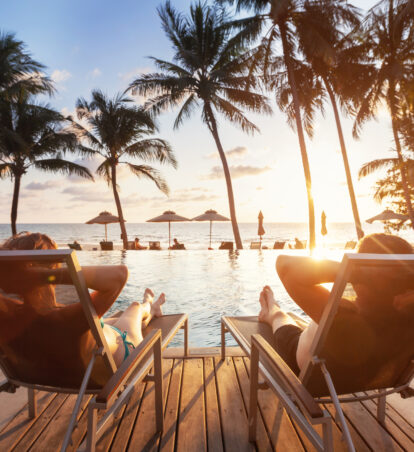Google Marketing Live 2024: Key Takeaways from the GCommerce Team
Every year, the marketing industry eagerly awaits Google Marketing Live, Google’s annual event to showcase what’s new in the world of Google advertising. While this year seemed to focus on e-commerce and retail heavily, there were still a lot of announcements and features that got us excited about what’s to come. Discover our key takeaways from Google Marketing Live 2024 below.

By Jaylene Van Lin, Marketing Specialist
Develop ads that adhere to your brand standards
Later this year, you'll be able to supply Google AI with your brand guidelines, such as your colors and fonts, to create ads that reflect your brand across multiple formats and channels. You'll also have the option to upload sample images, enabling generative AI to produce new images that match your visual style. Furthermore, you can use the "Generate more like this" feature to create additional on-brand variants of your successful assets.

By Morgan Tuohy, Senior Marketing Strategist
Take your AI-generated creative to other platforms
While using Google’s tools to create new creative assets, you retain the rights to use those assets across other platforms, including those not owned by Google. While other platforms lag behind Google on the move to AI-generated creative assets, you can maintain brand consistency and save time by taking assets from one platform to another.

By Alex Scharpf, Search Marketing Supervisor
Don’t underestimate short-form
Google is pushing towards YouTube Shorts more than ever, and the format is growing in terms of both engagement and viewership. As Google continues to provide more in-depth ways to monetize Shorts, vertical image assets and short-form video content will become even more important in the upcoming years. And because travel-based content already has a strong presence on Shorts, skipping these assets as a hotel may leave valuable customer interactions on the table.

By Maddie Holifeild, Marketing Specialist
Google Gemini has the potential to be a powerful tool for Hoteliers
While presenting at this year’s keynote, Philipp Schindler touched on the developments of Google Gemini, an AI assistant that provides access to Google AI. With a tool like this, Hoteliers can analyze large datasets to understand customer preferences and behavior patterns. This will allow hotels to deliver highly personalized marketing campaigns, offers, and recommendations like dining options, specific room types, and local attractions based on a guest’s previous stays or preferences. With AI on the rise, there is also an opportunity to enhance customer service through advanced chatbots and virtual assistants that can handle a wide range of inquiries, from booking reservations and answering questions about amenities.

By Meaghan Reynolds, Marketing Specialist
Google’s new brand profiles will help enhance hotels' online presence
Google’s introduction of new brand profiles and AI branding tools empowers businesses to showcase their unique brand identities more effectively. These tools will allow merchants to showcase and highlight key information with new and compelling visuals as well as using AI to effortlessly create engaging content. For Hotels, this is a great opportunity to feature new imagery, positive guest experiences, and videos directly in a search result. This new AI tool can allow hotels to generate new and engaging content which will help to enhance their marketing efforts and attract more potential guests.

By Alex Horrocks, Search Marketing Strategist
The Power Pair
At Google Marketing Live, the "Power Pair" strategy was highlighted, combining broad match keywords inside Paid Search Campaigns alongside Performance Max. While it's well-known that advertisers often prefer exact and phrase match keywords for higher quality traffic, Google shared data showing that Power Pair could boost conversions by 27%. As advertisers, we constantly test new strategies, but this approach might not suit smaller businesses. Paid search tends to be more effective with targeted campaigns rather than broad approaches for smaller businesses. If you decide to implement the Power Pair strategy, ensure you leverage your other tools by optimizing audiences, demographics, and bid modifiers to avoid unnecessary spending

By Lisa McGivney, Director of Marketing
Google will prioritize ads in AI overviews
The search community has long guessed that the only way Google would roll out GenAI into the live results would be if they found a way to maintain ad revenue. During Google Marketing Live 2024, they confirmed that although historically ads have only appeared above and below the overviews, they will now be testing ads within the AI Overviews. It will be interesting to see how this evolves and what type (if any) of reporting they offer to show the performance of ads within AI Overviews. We’ll be ready.

By Jael Dugdale, Metadesk Operations Team Lead
Embracing AI and intent-based searches
As AI takes center stage at Google Marketing Live 2024, the future of SEO is being reshaped. Google emphasized a shift from specific keywords to user intent, with more complex searches—often five or more words—becoming the norm. Where complex searches once required multiple steps, AI now provides comprehensive options in a single query. For example, a search for “fun places to eat in Monterey” can now yield clusters of results like reviews, sunset views, and seafood havens. Google Lens also enables easy identification of objects with a simple point-and-shoot. So, what’s next? Ads and organic search results will change, requiring SEO strategies to adapt. Beyond keywords, SEO should focus on intent-based searches, are they a seafood haven? Making sure their alt text identifies objects in images correctly, color, size, etc. providing relevant, concise content, and making sure they continue to highlight their Long-Term Sustainable Competitive Advantages (LTSCA) to stand out in future AI-driven searches.

By Kristina Webber, Marketing Specialist
First-party data is critical to advertising on Google
Having good AI requires good data. At Google Marketing Live, AI was mentioned frequently. However, having the right first-party data to fuel successful campaigns will help drive conversions more cost-effectively. To assist with this, Google announced a new feature: Measurement Diagnostics. This feature can evaluate your website and gather data by diagnosing missing data or opportunities that can be used to understand your audience through first-party insights.

By Nikki Abrego, Marketing Strategist
When will Power Pair take advantage of travel?
During the Google Live session, they introduced a game-changing feature, Power Pair. This feature combines search and performance campaigns to deliver the strongest data performance of ROI across all of Google, enhancing visual search. They demonstrated this with a retail example: a consumer snaps a picture of a suitcase, and search results populate with similar products. This got me thinking about the exciting possibilities we could explore for our clients and how this could significantly enhance our advertising strategies with hotels and travel.
Instead of taking pictures of products, users could upload an image of an aesthetic room or an environment they aspire to be in. For instance, if someone uploads a picture of a beach with a palm tree, our hotel client, The Cove, could appear in the search results with their villas providing that similar view. Or, if an image of a dark romance room aesthetic is uploaded, our client, Crossroads, could pop up with matching aesthetic suites available to book. By feeding images into Power Pair, this feature could encourage customers to book travel based on the visuals they have seen or saved on their Pinterest travel boards.

By Kaylin Long, Search Marketing Specialist
More choice for consumers means more opportunities for advertisers
People are starting to search in new ways—they’re asking more complex questions, searching with images, etc. All of these different ways that a consumer can search mean that the consumer has more choice, which means more opportunities for advertisers. Google is implementing more ways to implement shopping and metasearch-type ads that will be more relevant to our consumers. AI powered by Google will deliver the most relevant results to our consumers, bringing in more qualified leads and a higher ROAS.




